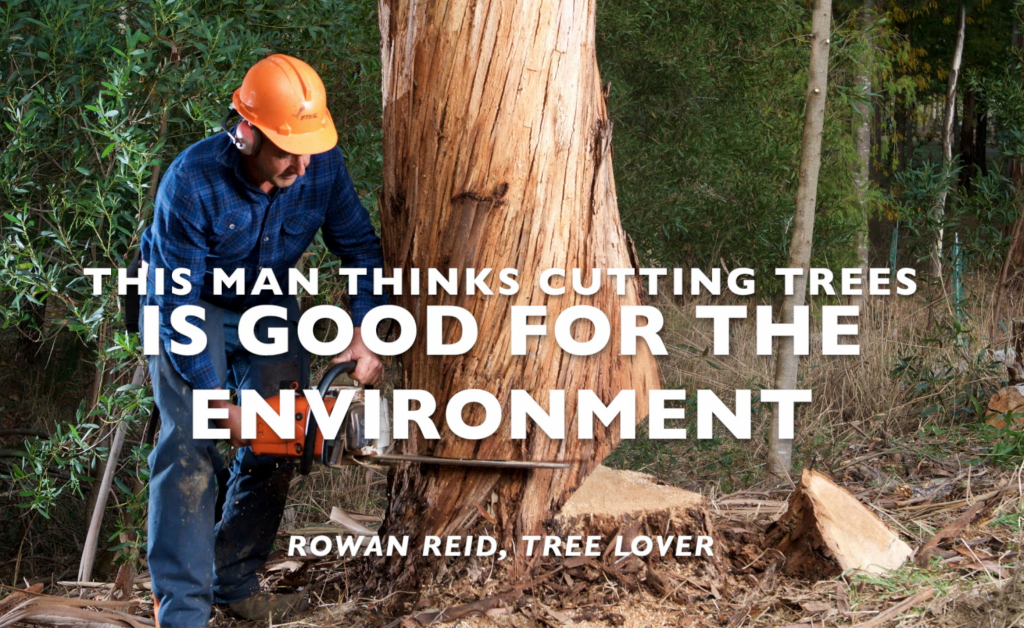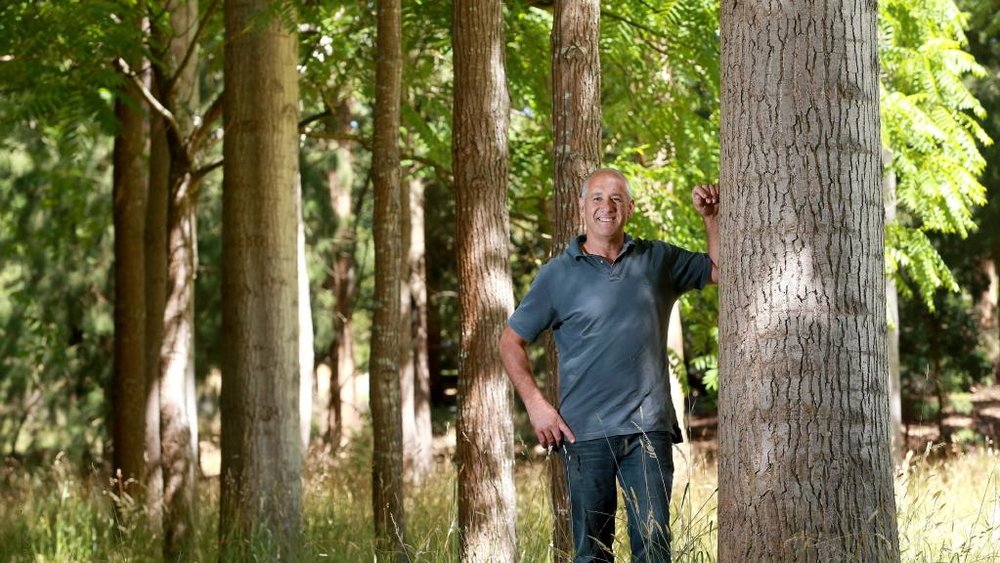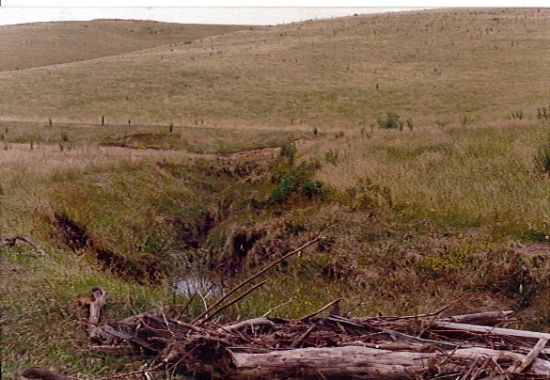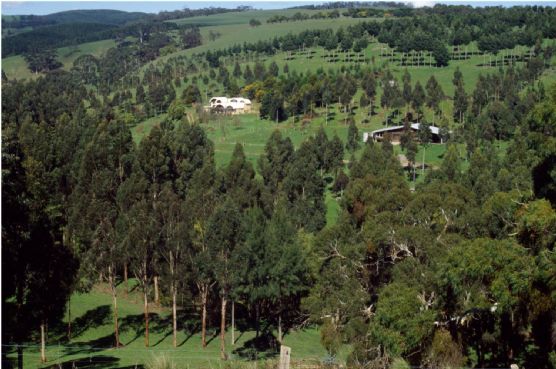Rowan Reid is a good friend of the Alliance, and plays a pivotal role in the Restore Australia program through the Australian Agroforestry Foundation and the Otway Agroforestry Network. Rowan proudly owns Bambra Agroforestry Farm; a 42-hectare ‘outdoor classroom’ for agroforestry located in the southern ranges of the Australian state of Victoria. Farmers, scientists, students and tree lovers have toured through the farm since 1987, allowing Rowan to share his passion for trees with thousands of visitors.
In his book ‘Heartwood: The art and science of growing trees for conservation and profit’, Rowan seeks to unite the dialogue between forestry and felling practices. Using examples from Australia, New Zealand, Africa, Europe, North America and South East Asia, he demonstrates how growing and cutting down trees for timber can be good for the environment.

Different species of trees grown at his farm are used to explore the technical aspects of trees, including planting, pruning, harvesting and timber processing. Most importantly, Rowan’s reflections of what it means to be a tree grower can inspire land owners to plant and manage trees for conservation.
On Thursday 30th April 2020, Rowan Reid and the Global EverGreening Alliance co-hosted ‘Wine & Wood’ – a live broadcast via Instagram to chat about forestry, conservation and the future of Australian farms.

First things first, why did you come up with the name ‘Wine & Wood’ for this book club chat?
Rowan: There’s red- and white-coloured timbers, the story of oak and curing of wine, but possibly the best connection is the notion that wine is produced as a high-quality product unique to a location. I would really like to see forestry changing to be something more attuned to wine production, growing in narrative and social value – as small producers participate in local, national and even international markets with a high-quality product.
How would you describe your book ‘Heartwood: The art and science of growing trees for conservation and profit’?
Rowan: When tree lovers walk into a book shop, you can basically separate the books into two groups. There are the ones that have the poetry, the art, and the stories about trees that talk about people’s passion for the forests. And then over there, you have the group that seek science or practice – how to grow them, how to identify the species. To me, tree growing is only exciting if you put both of those together.
I have a passion for both the art and the science of growing trees. I have put the book together having biographical stories about my own involvement with trees and the people I have met, stories about the development of different places around the world and in Australia, and also lots of technical stuff.
You need to understand the science, but it only makes sense if you have a story to place that science into. That is what tree growers do on their own farms – they have a passion, an outlook, an aspiration, and a bit of science is helpful. You really need to have both those parts together.
Why do you like chainsaws and want to cut down trees if you have such an appreciation for them and love the natural environment so much?
Rowan: In 1987, we purchased this property (Bambra). I was particularly looking for a landscape that needed repair, so that no one would say I was putting trees in the wrong place. I was a young forest scientist thinking about how to make forestry, even the act of cutting a tree down, attractive to two groups of people in particular: the farming community who make decisions about land management, and anyone else who cared – the conservation groups, interested bystanders and neighbours. Forestry had to address problems and make the other end attractive too.
Last week, I harvested a 35-metre tall eucalypt. Over 2 tonnes of log from which I can get about a cubic metre of sawing timber, hopefully worth well over two-thousand dollars (AUD). As it was growing, it provided biodiversity, aesthetics, and shelter.
A chainsaw is simply a tree-planting tool – a tool that can be used to do harm, but also good. In that context, we are trying to use the chainsaw as a means of getting some of the trees out of the system that we can mill up and produce timber, throw in the kiln, or produce furniture. Tables and beds worth thousands of dollars came from a tree growing along the creek; the important point is that the forest is still there – the forest is still providing value.
In fact, I argue [the forest] is better because I have cut that tree down. The stump is actually providing a refuge for fungus and the gap in the canopy allows sunlight and moisture through for the rainforest species we grow there. So that notion of cutting a tree down being a bad thing; I want to see if we can explore how growing trees for timber can be done in ways that create good in the environment. I made a decision over thirty-five years ago that I wouldn’t work in the conventional forestry world, because that notion of doing damage is really strong.
Many people believe family farming has caused a negative impact, for example, through logging. Why include trees on farms?


Rowan: I work in the agricultural landscape and I have a history of family farming that goes back to the 1800s. Mass degradation is not these farmer families’ fault, but ignorance, bad laws and incentives. The biggest environmental issue in this country (Australia) isn’t occurring at the forest blockade; it is occurring at the farm gate, where we have lost enormous amounts of biodiversity and agricultural soil. We want to build back resilience into the landscape and overlay trees to increase the value of the farm, rather than replace farming.
Using trees to cover maybe 15-20% of the agricultural landscape, with long biodiversity corridors and water courses, [planted] on land that is otherwise unproductive… the farm is going to be a better asset in terms of its overall value.
Thinking of the economics or the opportunity to generate an income, build a house out of timber, make your own furniture, or provide the firewood for your family; all of these acts of taking from the forest can be done in a way that they enhance that forest, enhance biodiversity and provide shelter.
Enhancing the system, we are looking at a great opportunity, engaging with 100,000 farmers around Australia – millions around the world, who can participate in multi-purpose tree growing, developing the landscape.
Could you explain your involvement in Restore Australia?
Rowan: This is a really exciting project; this is big change we are talking about! There is a lot of money coming into Australia with a focus on tree planting and locking up carbon in the soil, which is of course important and captures people’s attention. What captured my attention is that this funding does not come in combat by having to meet the popular opinion. It can challenge ideas.
A lot of innovators in Australian farming history have been seen as outsiders – we have a long history of that. There are good fundamental ideas coming from these people, and they need a program like this to get them to engage and explore a whole different landscape.
The other thing I was really keen to see happen is building a foundation. The [Restore Australia] project is talking about scaling up these great ideas, spreading them across the landscape like Vegemite across your toast. Just as important it is to scale deep; our involvement will be in the field of education and mentoring – introducing the science of tree growing while letting go of those preconceived notions about what wouldn’t work.
A strong foundation would allow people to continue that activity when the money stops, or it goes in a different direction. As we have seen with so much landcare funding in the past, when the money stops, the trees stop; because the money was directed into planting the tree. It is much more enduring if the money is directed into changing the mindset, the resources, the infrastructure, the capability, the confidence, and the understanding of the people making the decision to plant the tree.
We have to be different. The problems are huge, and we have to really treat them in a different fashion.
This is an extract of our live Instagram chat, which has been edited for length and clarity purposes.